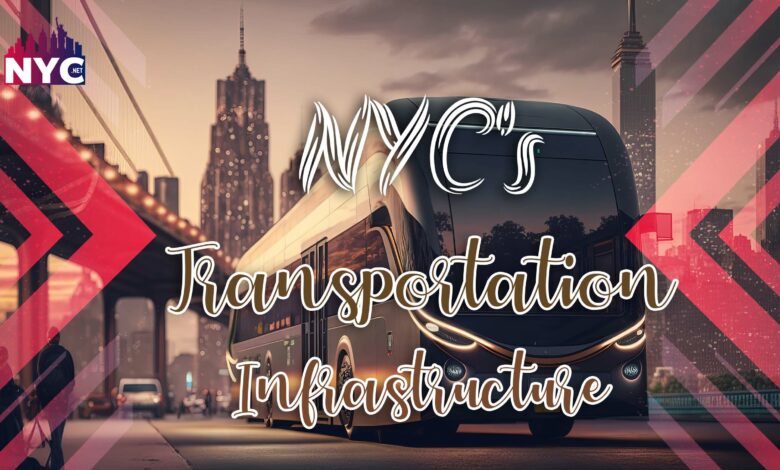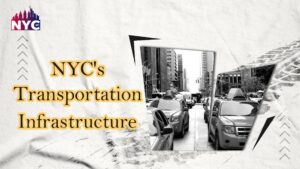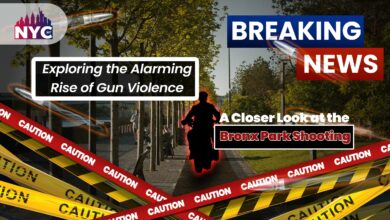The Future of NYC’s Transportation Infrastructure: Innovations and Investments

NYC’s Transportation Infrastructure
New York City has always been at the forefront of transportation innovation. It is undoubtedly, one of the world’s most populous and bustling cities. From its iconic yellow cabs to its sprawling subway system, NYC’s transportation infrastructure has come long since horse-drawn carriages.
But as technology advances at an unprecedented pace, what does the future hold for this urban hub’s transportation network?
This blog post explores exciting plans for innovation and investment in NYC’s transportation infrastructure.
The current state of NYC’s transportation infrastructure
Before we dive into the whole future of NYC’s transportation, let’s look at its current state.
Today, New York City’s transportation infrastructure is one of the most extensive and complex in the world. The city is home to a vast network of:
- roads,
- bridges,
- tunnels,
- subways,
- buses,
- ferries and bike lanes
Here is a brief description of some of the transport systems in NYC:

NYC Subway System:
First and most importantly, the infamous Subway system.
The NYC subway system covers over 660 miles of track and carries around 5 million passengers on average weekdays. It is known as one of the best subway systems in the world. Additionally, it has undergone some renovations recently, such as:
- new digital signage
- and countdown clocks.
However, many subway parts still need to be updated.
Bus Network
The subway system leads us to the Bus Network.
New York’s bus network is also in dire need of improvement. Buses often get stuck in traffic or behind schedule due to heavy street congestion.
Consequently, it results in lethargic delays for commuters who rely on public transport to get around the city.
Therefore, the state must pay more attention to improving the bus network.
Road Infrastructure
Furthermore, though New York’s road infrastructure is quite updated, it still faces challenges as well, such as:
- Aging bridges like Brooklyn Bridge require frequent maintenance,
- while potholes remain a persistent issue throughout many areas of NYC.
Moreover, NYC’s transportation infrastructure needs modernization to keep up with its growing population and improve quality-of-life for its residents.
Maintenance of road infrastructure is crucial for the state’s progress as a whole. Not only this, but it is also important to prevent any life-threatening accidents. Hence, the government should pay special attention to its maintenance.
The city’s current plans for transportation infrastructure innovation and investment
New York City is undoubtedly renowned for its bustling streets and crowded transportation systems. However, its progress is only possible with updated development. Unfortunately, the city has faced significant issues related to its aging infrastructure in recent years.
However, currently, many plans have been made for the development, such as:
$51 Billion Plan
Firstly, the city has put forth an ambitious plan to invest $51 billion into improving the accessibility and reliability of its transportation network.
The centerpiece of this Plan is “Fast Forward,” a comprehensive initiative to modernize New York’s subway system by:
- upgrading signals and tracks,
- purchasing new cars,
- and expanding ADA accessibility across stations.
The program also includes additional investments in bus rapid transit networks throughout the city.
Bicycle and Infrastructure Plans
In addition to public transit improvements, the city invests heavily in bicycle infrastructure. It comes with plans to build 80 miles of protected bike lanes annually. This investment seeks to encourage more sustainable modes of transportation while creating safer streets for all users.
These initiatives demonstrate NYC’s commitment to building an innovative and multi-modal transportation system. These updated versions will eventually meet the needs of residents today while preparing for future growth challenges.
While many obstacles remain to implement such changes efficiently within budget constraints, this bold action demonstrates hope that one day we’ll see improved mobility options throughout our beloved metropolis.
How these plans will impact residents and commuters
The proposed innovations and investments in NYC’s transportation infrastructure will significantly impact residents and commuters.
- Firstly, expanding bike lanes and pedestrian paths across the city will create safer and more accessible routes for those traveling by foot or bicycle.
- Additionally, implementing congestion pricing in certain areas of Manhattan is expected to reduce traffic congestion while generating revenue for further transportation improvements.
- Moreover, plans to modernize subway stations with new signaling systems will improve efficiency and decrease delays for millions of daily riders. Introducing contactless payment options on buses and subways will also streamline the commuting experience.
- Furthermore, increasing accessibility for disabled individuals across all modes of transportation is an essential aspect of these proposed changes. This includes added elevators at subway stations and constructing curb cuts at intersections throughout the city.
These proposed changes aim to make transportation more efficient, sustainable, safe, accessible, and enjoyable for all New Yorkers.
The potential benefits of the proposed changes
The proposed changes to NYC’s transportation infrastructure have the potential to bring about numerous benefits for residents and commuters alike.
Improve Accessibility
One of the most significant advantages is improved accessibility, with plans including:
- expanded bike lanes,
- pedestrian zones,
- and subway stations.
This increased access will make it easier for people to get around and reduce road congestion, decreasing air pollution levels across the city. Additionally, these improvements will encourage more active forms of transportation like cycling or walking instead of cars.
Enhanced Safety Measures:
Another benefit is enhanced safety measures such as upgraded signals and crossings to improve traffic flow while reducing accidents. This is especially crucial given that there were approximately 200 deaths related to traffic accidents in New York City in 2020 alone.
Betterment of Public Transport System:
Furthermore, investment improves public transport systems like subways and buses. The vision behind this is to provide affordable alternatives for those who cannot afford private vehicles or cannot use them due to mobility issues. These options can increase opportunities for employment by making it possible for workers who live further out from their job sites an accessible commute option.
Investing in updated transportation infrastructure has far-reaching benefits beyond getting people where they need to go faster. It positively affects health outcomes and environmental concerns while increasing overall productivity within the community.
The challenges faced in implementing these changes
While investing in and innovating the transportation infrastructure of NYC is a necessary step towards improving the city’s transit system, several challenges must be overcome to make these changes possible.
Some of the challenges include:
Funding:
One major challenge is funding. The cost of implementing significant changes to the city’s transportation infrastructure can be substantial and requires:
- extensive planning,
- coordination,
- and resources.
Securing adequate funding for such projects may require increased taxes or fees, which could face opposition from some members of the public.
Complex Bureaucracy:
Another challenge is navigating complex bureaucracy at both local and state levels that can slow down progress on critical projects. Additionally, accommodating various stakeholders’ interests while simultaneously keeping costs low poses a difficult balancing act.
Traffic Congestion and Disruptions:
Furthermore, construction work itself will cause disruptions and traffic congestion during implementation. This inconvenience could deter commuters from using certain routes even after completion due to residual discomfort caused by long periods of turmoil.
Getting all stakeholders involved early in infrastructural change management would reduce potential pushback or resistance later on as they would feel represented throughout this process.
Despite these challenges facing the implementation of NYC’s proposed innovations to its transport network, it remains essential to creating a better future for all New Yorkers who rely on an efficient transport service daily.
The need for innovation and investment
As New York City grows and evolves, so must its transportation infrastructure. The city’s plans for innovation and investment in this area are crucial for ensuring the smooth functioning of the city’s daily life and contributing to a more sustainable future.
The proposed changes have the potential to significantly impact residents’ lives, making commutes faster, easier, and more pleasant. However, these changes will have their fair share of challenges in securing funding and minimizing construction disruption.
Nevertheless, there is a pressing need for innovation and investment in NYC’s transportation infrastructure.
By taking bold steps towards modernization now, we can ensure that our city remains at the forefront of progress while improving the quality of life for all who call it home.
Conclusion
The future of NYC’s transportation infrastructure looks promising with the city’s plans for innovation and investment. The proposed changes will undoubtedly significantly impact residents and commuters, making their daily commute more efficient and comfortable.
Despite these challenges, NYC needs to push forward with its plans for innovation and investment in transportation infrastructure. Doing so would enhance the city’s competitiveness and improve the quality of life for residents and visitors while reducing carbon emissions.
We look forward to seeing its progressive development in the future.



